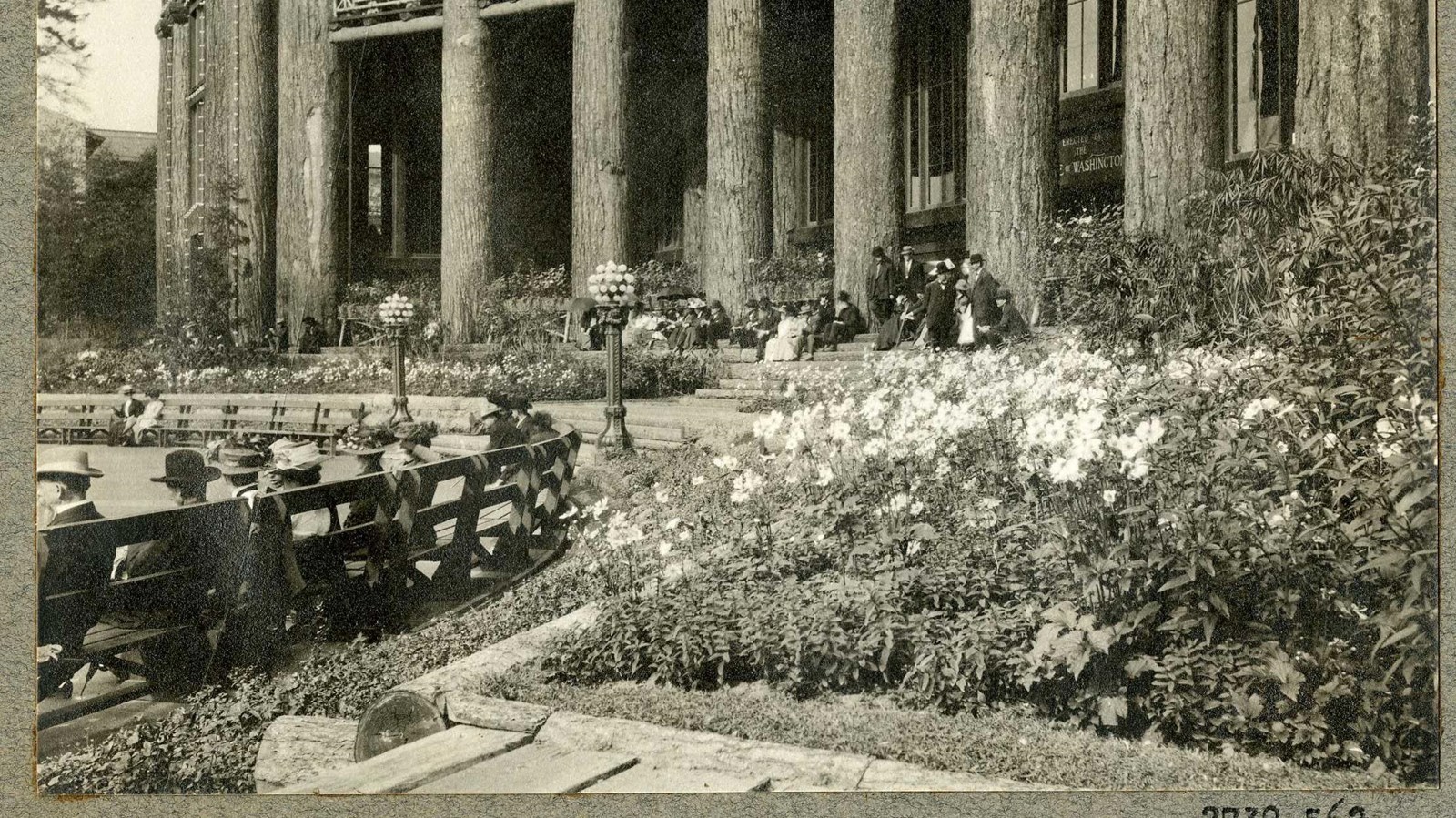Last updated: May 24, 2024
Place
Alaska-Yukon-Pacific Exposition

Olmsted Archives, Job #02739, Seattle, WA
Quick Facts
To celebrate and publicize the development of the Pacific Northwest, it was decided a world’s fair would be held in Seattle. In October 1906, the Alaska-Yukon-Pacific Exposition Company hired John Charles Olmsted to design the grounds, believing he would create a breathtaking design like his father had at the World’s Columbian Exposition.
John Charles faced two major constraints in his work for the exposition. The first was that the budget, which would cover the clearing of 200 acres, grading slopes, and planting grounds was only $350,000, which was a tough deal considering his father Olmsted had gotten over triple that amount to design his world’s fair sixteen years earlier. The second constraint was that once the fair was finished, the buildings and grounds would be given to the University of Washington.
John Charles developed a plan that would serve both the needs of the fair and of the university. As opposed to other world’s fairs of the time, the design of the A-Y-P relied on the natural scenery, including nearby Mount Rainier, Lake Washington, and Lake Union, as focal points to lay out buildings, roads, and paths around.
Incorporating the surrounding landscape, adapting to the topography of a site, using native vegetation and water features are all characteristic of Olmsted designs. John Charles' design of the A-Y-P would be dubbed the “Rainier Vista” and is the central core of the University of Washington campus, still cherished today.
Source: "Alaska-Yukon-Pacific Exposition," Olmsted Online
For more information and primary resources, please visit:
Olmsted Research Guide Online
Olmsted Archives on Flickr
John Charles faced two major constraints in his work for the exposition. The first was that the budget, which would cover the clearing of 200 acres, grading slopes, and planting grounds was only $350,000, which was a tough deal considering his father Olmsted had gotten over triple that amount to design his world’s fair sixteen years earlier. The second constraint was that once the fair was finished, the buildings and grounds would be given to the University of Washington.
John Charles developed a plan that would serve both the needs of the fair and of the university. As opposed to other world’s fairs of the time, the design of the A-Y-P relied on the natural scenery, including nearby Mount Rainier, Lake Washington, and Lake Union, as focal points to lay out buildings, roads, and paths around.
Incorporating the surrounding landscape, adapting to the topography of a site, using native vegetation and water features are all characteristic of Olmsted designs. John Charles' design of the A-Y-P would be dubbed the “Rainier Vista” and is the central core of the University of Washington campus, still cherished today.
Source: "Alaska-Yukon-Pacific Exposition," Olmsted Online
For more information and primary resources, please visit:
Olmsted Research Guide Online
Olmsted Archives on Flickr
